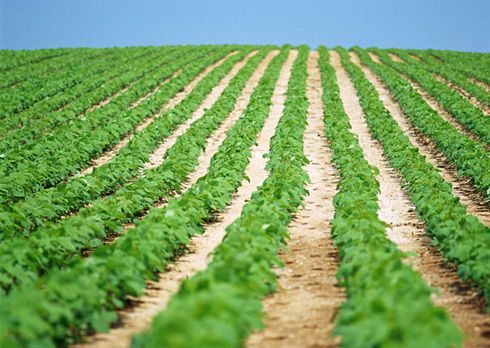Can Improved Agricultural Practices Help Combat Climate Change?
Published on by Naizam (Nai) Jaffer, Municipal Operations Manager (Water, Wastewater, Stormwater, Roads, & Parks) in Academic
Did you know that over half of global non-carbon dioxide (non-CO2) greenhouse gas (GHG) emissions are accountable to agriculture? According to new a research study recently published in the Journal of Integrative Environmental Sciences, this figure is set to rise substantially in the next two decades, especially in developing countries
However, by analysing US Environmental Protection Agency (USEPA) data and models, the authors have projected that there is significant potential for the agricultural sector to provide relatively low-cost opportunities for reducing GHG emissions by 2030.
Agricultural emissions arise principally from cropland soil management, rice cultivation, ruminant livestock and livestock manure management, all of which emit Nitrous Oxide (N2O) and Methane (CH4). Even though farms and businesses across the agricultural sector are interested in effective global GHG abatement, there is limited data on global agricultural sector emissions relative to the data development on fossil fuel emissions. One of the reasons for this is that there are unique challenges to developing agricultural data over large geographical areas, particularly with different regions and countries employing diverse farming methods and activities that emit multiple types of GHGs, with potentially complex interactions.
The authors of this new research paper analysed data and models from the USEPA's updated global non-CO2 GHG mitigation assessment to investigate the potential for GHG reductions from agricultural emissions from seven regions globally, offsetting costs against social benefit of GHG mitigation (e.g. human health, flood risk and energy costs). Various mitigation scenarios have been analysed for crop production, rice systems, livestock management and manure management. For each scenario the authors calculated the break-even price, taking into account yield levels, commodity prices, labour requirements and water resources. The authors have also compared baseline emissions versus mitigation emissions levels to formulate mitigation potential at break-even prices for 2010, 2020 and 2030.
The results revealed significant potential for GHG mitigation in the agriculture sector, with a projected 13 to 16 percent reduction of GHG (or over 520Mt CO2) per year. Asia in particular offers a lot of opportunity for significant GHG mitigation, with improved or reformed livestock management and rice cultivation practices found to offer the greatest reduction. The authors do however urge caution due to the potential impact on yield production which could have implications for regional and global food security.
Download the full report: Robert H. Beach et al. "Global mitigation potential and costs of reducing agricultural non-CO greenhouse gas emissions through 2030" , Journal of Integrative Environmental Sciences (2016). DOI: 10.1080/1943815X.2015.1110183
Attached link
http://phys.org/news/2016-03-agricultural-combat-climate.htmlTaxonomy
- Research
- Greenhouse Gases